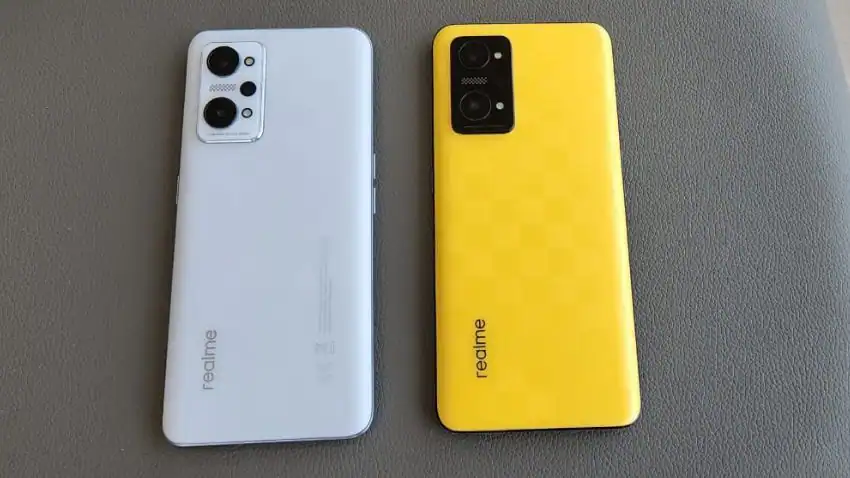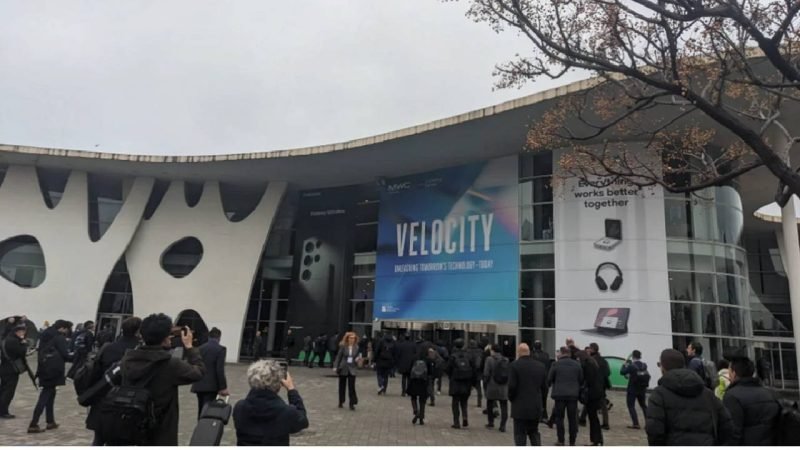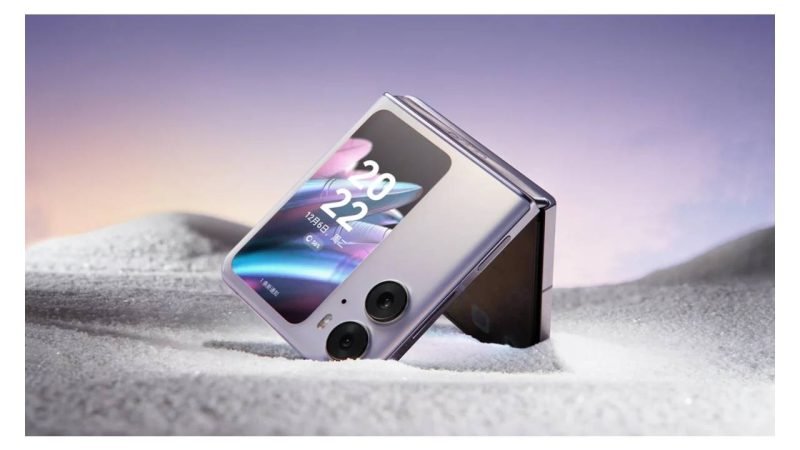realme GT NEO 3T: In-depth analysis and opinion

A few days ago, realme introduced the GT NEO 3 series, consisting of: GT NEO 3 150W, GT NEO 3 80W, GT NEO 3T, and GT NEO 3T Dragon Ball Z Edition .
The realme GT NEO 3T features a 6.6″ 120Hz AMOLED screen, Snapdragon 870 5G processor, 8GB RAM, 128/256GB storage, wide-angle rear camera (64MP, f/1.8) + wide-angle ( 8MP, f/2.3) + macro (8MP, f/2.4), wide-angle front camera (16MP, f/2.5) and 5,000 mAh battery with 80W fast charge.
The realme GT NEO 3T arrives in Spain with an official price of €429.99 (8/128GB) and €469.99 (8/256GB), but you can find good deals on Amazon .
Next, I bring you my in-depth analysis after trying it for a few weeks.
Section Index
Design
Screen
Performance
biometric security
Drums
Multimedia
Camera
calls
Precio
Conclusions
Table of Contents
design and construction
The realme GT NEO 3T series has a racing-inspired design, and for the realme GT NEO 3T, the company has adapted the checkered flag elements in its Dash Yellow and Drifting White color variants .
The same does not happen with the Shadow Black variant , which is precisely the one I have tried, since it has a sober dark gray finish on the back. Fortunately, fingerprints are not too marked on its surface.
The phone’s chassis is made of plastic , so it doesn’t feel as premium to the touch and to the eye as other aluminum-built smartphones. The same degree of shock resistance cannot be expected either.
The back, also made of plastic, houses the cameras and the flash on a rectangular module that protrudes slightly from the surface. Since the module is located in a corner, the phone dances slightly when pressing on the screen when it is placed on a flat surface.
If we look at the front, we find a 6.6″ flat screen with the front camera in a hole in the upper left corner. The diameter of the hole is not too big, so it is not annoying.
The bezels surrounding the screen are narrow and symmetrical, although the bottom bezel (commonly known as “the chin”) is slightly thicker than the rest.
Its screen-to-body ratio is 93% according to the company, but 86% according to GSM Arena.
The company doesn’t refer to any glass protection in the spec sheet, but it does appear on some sites that it incorporates Gorilla Glass 5 protection on the screen. This means that it has some protection against bumps and scratches.
The phone has an X-axis linear motor that can be seen in all four directions, providing a pleasant 3D vibration sensation.
Next, we are going to review the different elements that we find on the sides of the phone.
On the right side we find the power button, which has a good feeling to the touch.
On the left side we find two volume buttons.
The upper part of the phone is free of any element.
The bottom of the phone has a USB-C connector, the speaker and the tray for two nanoSIM cards.
Realme has not provided the phone with water protection , although it would be rare to find this protection on smartphones in this price range.
Screen
realme GT NEO 3T has a large 6.6″ AMOLED E4 screen with a 20:9 elongated ratio. The screen resolution is Full HD + (2,400 x 1,080 pixels), which implies a high pixel density of 398 dpi.
In case you’re wondering what “E4” means in the name of the screen, it refers to Samsung’s latest generation of AMOLED panels. These panels offer a slightly higher maximum brightness and, above all, lower power consumption compared to the previous generation E3.
An attraction of the panel is its 360 Hz sampling rate, as well as its 120 Hz refresh rate.
The 120 Hz refresh rate translates into a smoother viewing experience, especially when moving around the interface or scrolling in applications such as the web browser, Twitter, Instagram or the photo gallery.
A higher refresh rate also implies a higher battery consumption. Luckily, the realme offers three operating modes: normal (60 Hz), high (120 Hz), and automatic selection.
High Rate (120 Hz) and Auto modes are adaptive. This means that content is normally displayed at 120Hz but is reduced to 60Hz if the image remains static for several seconds or when playing certain content such as videos (60Hz).
At this point, I don’t know what the difference is between choosing the high rate mode or the automatic selection.
Some smartphones are more advanced and can reduce the refresh rate to 10 Hz (or even less) if, for example, you are viewing a static image, but in the price segment we are in, realme GT NEO 3T more than complies.
The panel’s sub-pixel array is of the PenTile type , as is usual for OLED panels. This means that the sub-pixels are arranged in a diamond shape with more green sub-pixels than red or blue. Therefore, the effective resolution of the panel is lower than the nominal resolution when the screen displays blue or red colors.
The LCD screens that other phones have have RGB matrices, where the sub-pixels are placed one after the other, in red-green-blue (RGB) rows, so the announced resolution applies equally to the sub-pixels of each colour.
According to the company, the screen covers 100% of the sRGB and Display P3 color spaces . If you’re not familiar with color spaces, sRGB (Rec. 709) is the standard for Android (and the computing world in general), while Display P3 space offers a wider range of colors and is used in the film industry.
There is an even wider color space called Rec. 2020 , which covers 76 percent of the spectrum visible to the human eye.
No current panel is capable of displaying this last full color space, instead typically sticking to around 60 percent.
realme GT NEO 3T offers two screen calibration modes: Vivid, Natural and Pro .
The Vivid color mode is activated by default and displays somewhat over-saturated colors, since it activates the DCI P3 color space. Many users prefer vivid colors over realistic colors, so it’s no coincidence that this is the default mode.
Natural color mode displays more true-to-life colors, making it best suited for situations where color fidelity matters: photo and video editing, clothing shopping, and more. In both modes, we can adjust the color temperature to our liking.
Finally, the Pro color mode allows you to choose between a Cinematic mode, which is the DCI P3 display mode, and a Brilliant mode that uses a wider color gamut to display even more vivid colors.
To analyze the quality of the display, I have carried out various tests with the professional software CalMAN Ultimate and an X-Rite i1Display Pro colorimeter .
As I have mentioned, by default the Intense mode is active , which points to the DCI P3 color gamut (it covers 95% of this color space according to my measurements), so the colors can be seen as oversaturated when using standard apps, since that these normally use the sRGB space.
This mode has an important advantage when using the phone in broad daylight since, in the sun, the colors lose their strength.
In Vivid mode, the average error in color fidelity relative to the DCI P3 gamut is good , 2.9 dE (below 4 dE is considered excellent and above 9 is considered unacceptable), and the maximum error turns out to be 7.2 AD
The color temperature is 7,259ºK, well above the reference level of 6,500ºK, so a bluish tint can be seen in apps with a white background, such as the browser.
Results with Vivid display mode
Natural mode is intended to more closely reflect the sRGB gamut, which is commonly used in the smartphone and computer industry.
This is the mode to choose if you’re looking for maximum color fidelity in app and game content according to how the developer designed it — although colors are perceived as duller than with Vivid mode.
With sRGB mode active, the screen covers around 99% of the sRGB gamut. The average error in color fidelity is excellent, only 1.3 dE and the maximum error turns out to be 2.4 dE. The color temperature, 6,500ºK, is simply perfect.
Results with Natural screen mode
The maximum brightness with the brightness control in manual mode is 468 nits according to my measurements. This brightness value has been measured with 100% of the screen illuminated (known as APL 100%).
In auto brightness mode, when in strong light like the sun, the brightness increases to a maximum of 766 nits . realme speaks of a maximum brightness of 1,300 nits, but does not specify with what percentage of the illuminated screen it has achieved that mark.
In the following graph, the maximum brightness is reflected with 100% of the illuminated screen, which is how this parameter is usually measured. Compared to other smartphones (albeit more expensive), the maximum brightness of realme GT NEO 3T is good , although it is far from the flagships.
Viewing angles are wide, although brightness is reduced when viewing the screen from an angle.
This panel is not compatible with HDR content , so you cannot enjoy high dynamic range videos on streaming services like YouTube or Netflix.
In the Display and Brightness settings we find an option called Visual comfort mode , which activates a blue light filter to reduce eye fatigue by limiting the amount of blue light emitted by the screen. This mode can be activated manually, at certain times, or from sunset to sunrise, making it possible to control the intensity of the effect.
Always On Display functionality is also present, so when the phone is not in use the display shows useful information such as the date, time, battery level and notification icons.
realme has also added a couple of features related to video enhancement: video image refiner, which improves the definition of low-quality videos, and video color enhancer , which expands the color gamut of SDR recordings to HDR for a better visual experience. In both cases, if these functionalities are activated, the battery consumption increases.
Another interesting feature is the possibility to artificially increase video frames from 30 FPS (or less) to 60 or 120 FPS using MEMC. To make use of this functionality, you need to enable the Video Motion Enhancement option.
MEMC (or Motion Estimation Compensation) is an interpolation technique that inserts frames into videos to make them look smoother. Most movies and TV shows are recorded at 24 or 30 FPS, but with MEMC, they can be played back at higher FPS.
An HDR video brightness mode is also present , which increases the brightness of the screen when playing HDR videos at the cost of increasing battery consumption and heating up the phone.
Performance
realme GT NEO 3T arrives with the upper-middle-range processor Snapdragon 870 5G , which was announced in January 2021 as a chip halfway between the Snapdragon 865+, flagship of 2020, and the Snapdragon 888, the most powerful of 2021.
The Qualcomm Snapdragon 870 5G is a chip manufactured on a 7nm process. It integrates a “Prime” core that reaches 3.2 GHz, three high-performance ARM Cortex-A77 cores up to 2.42 GHz and four low-power ARM Cortex-A55 cores that reach 1.8 GHz
Compared to the older, similarly featured Snapdragon 865+, the Prime Core runs 100 MHz faster and the GPU clocks slightly faster. Thus, the Snapdragon 870 is slightly faster than the older Snapdragon 865 and 865 Plus and falls behind the high-end Snapdragon 888.
The mobile platform integrates a Qualcomm X55 5G modem with support for Sub-5 and mmWave and global 5G bands with a speed of up to 7.5 GBit/s (download).
The integrated GPU is still the Adreno 650 and offers a slightly higher clock speed of 670 MHz.
The integrated Hexagon 698 DSP delivers KI performance of up to 15 TOPS (vs. 7 TOPS on the 855) and still uses a mix of CPU, GPU, HVX, and Tensor cores. The Spectra 480’s ISP has also not changed. The integrated memory controller supports LPDDR5 with up to 2,750 MHz and LPDDR4X with 2,133 MHz.
The phone arrives with 8 GB of LPDDR4x RAM . It is not a very high amount in these times, but it should be enough for most users who are interested in this phone. It’s also not the fastest type of RAM, although we didn’t expect LPDDR5 in a smartphone in this price range.
The phone features DRE — Dynamic RAM Expansion — technology, thanks to which part of the internal storage can be used as virtual RAM. It is possible to select 2, 3 or 5 GB of additional space.
Access to this functionality is a bit hidden since you have to go to Settings > Device information > RAM . Although I have had it active, I cannot say if the use of this functionality has made any difference, since its operation is invisible.
biometric security
realme has incorporated an integrated fingerprint reader under the screen . In my experience, it is quick to unlock the phone.
To unlock the phone, we need to see the illuminated fingerprint logo at the bottom of the screen. Although it is normally off, just pick up the phone so that it lights up and we can place our finger to start unlocking.
Fingerprint recognition occurs by placing your finger on the screen without pressing. During the reading of the fingerprint, an animation is shown on the screen that we can customize by choosing between eight possibilities.
Fingerprint recognition is reliable as long as we place our finger in the correct area. Fortunately, the fingerprint recognition area is quite wide, so it is not necessary to hit the exact spot with your finger. Now, in my opinion, the fingerprint reader is located too low and it is not comfortable to reach it with your finger.
realme incorporates a feature called Quick Launch that allows you to open apps during the unlock process if you keep your finger on the fingerprint sensor until the icons appear. Without lifting your finger, you can slide it to an icon and release it to launch the corresponding function or app.
realme has also incorporated its facial recognition system , which allows us to unlock the phone simply by using our face. Face identification takes place very quickly, allowing us to access the smartphone without having to do anything except look at the phone.
The phone offers an option to illuminate the screen in order to cast light on our face so that recognition can occur even in the dark. It also includes choosing whether we want to stay on the lock screen or go directly to the desktop when the recognition is complete.
Now, we must bear in mind that facial recognition is simply 2D, so it is not as secure as the 3D facial recognition that other devices incorporate and could be fooled by a photo or video. In this regard, realme has added a control that forces your eyes to be open for the phone to unlock.
For this reason, facial recognition is not available for certain sensitive actions such as banking operations or confirming mobile payments.
realme allows you to individually choose whether you want to use face unlock to unlock the device, access password-protected apps, or access the safe.
Drums
The realme GT NEO 3T battery has a capacity of 5,000 mAh , which is more than enough for its 6.6″ screen and its hardware.
According to the company, this battery provides 29 hours of phone calls, 26 hours of video playback, and 88 hours of music playback.
Given the importance of the screen in battery consumption, it is important to calibrate the screens with a colorimeter (or a similar instrument) at the same absolute level of brightness (it is not valid to set it to 50%) if you want to obtain comparable autonomy results. between devices.
Otherwise, the results may be greatly affected by the brightness level of each smartphone’s screen and are therefore not comparable. I mention this here because not all analyzes take this into account, and in this test, absurd values are sometimes seen.
In the case of PCMark: Work 3.0, the test itself indicates that the test must be carried out with the screen calibrated at 200 nits so that the results are comparable. This is how we carry out the autonomy tests on smartphones.
PCMark Work 3.0 tests the autonomy of the terminal when performing a mixture of daily and demanding tasks, since the test simulates browsing web pages, writing texts and inserting images, applying filters to photographs, editing videos and data manipulation.
In testing, I’ve gotten an impressive 13 hours and 43 minutes with the screen refresh rate set to Auto. When setting the screen to high frequency (120 Hz), the autonomy is 13 hours and 45 minutes, and when setting it to normal frequency (60 Hz) it increases to 14 hours and 12 minutes.
Interface and functionalities
realme GT NEO 3T runs Android 12 , and on top of the operating system, realme has incorporated its own realme UI 3.0 customization layer.
With realme UI 3.0, the company has tried to achieve a more expressive design, a better organized item layout, and a smoother interface experience.
For starters, the icons have been revamped thanks to a new 3D design . The outline adds weight, and a semi-transparent technique is used for a more modern design to show through. Thus, the design of the icons is more colorful and three-dimensional. Compared to realme UI 2.0, a wider color palette has been incorporated to suit the taste of young people.
realmeUI 3.0 features a layout that provides a greater sense of space throughout the site . The size of the title, as well as the contrast of symbols and text, have been increased to visually highlight the most important elements.
Animations have been optimized to provide a smoother experience thanks to the AI animation engine. realme also offers floating window 2.0 that you can customize for different multitasking uses.
Another cool feature is Smart Sidebar, which offers quick access to some of your favorite apps. The system allows you to adjust the position of the sidebar.
Multimedia
realme GT NEO 3T offers stereo sound as it has two speakers: one at the bottom of the smartphone, to the right of the USB Type-C charging connector, and another at the top edge of the screen.
The sound is not completely symmetrical, as the bottom speaker sounds louder than the front speaker.
The sound that is emitted has a fairly powerful volume, although at maximum volume level the sound sounds quite shrill.
As usual in smartphones, a greater richness of tones is missed, especially in the bass, due to the small size of its speakers.
realme has not included the 3.5mm jack , so you will have to resort to a USB-C to 3.5mm adapter or use USB-C / Bluetooth headphones.
realme GT NEO 3T supports Dolby Atmos sound, which should bring more depth to the sound.
In terms of audio codecs, it is compatible with SBC, AAC, aptX, aptX HD, IDAC and IHDC.
realme GT NEO 3T allows you to apply various sound effects: Smart (recognizes the situation and applies the optimal sound effects), Theater/Cinema , Game , and Music .
Similarly, it is also possible to adapt the sound to four situations: indoors (when there is not much noise), on the move (ideal for places with a lot of noise and people), traveling (for public transport) and flying (for entertainment during a flight).
realme uses its own Music app as the default music player. This app organizes music into four tabs: Songs, Artist, Albums, and Playlists .
It is a fairly simple player, without the possibility of downloading covers or song lyrics. It is also not possible to play music stored on an external device (such as a NAS drive) or a cloud service.
Camera
realme GT NEO 3T has a triple rear camera:
64 MP (1/2.0″, 0.7µm) wide-angle main camera (25mm) with f/1.8 aperture and PDAF
8 MP (1/4.0″, 1.12µm) ultra wide angle camera (119º) with f/2.3 aperture
2MP macro camera with f/2.4 aperture
In this set of cameras, there are some important absences. For one thing, the main camera lacks optical stabilization, so expect poorer low-light performance. On the other hand, the telephoto camera is missing, although that would have significantly increased the price of the smartphone.
The camera offers a Pro mode that allows you to modify various parameters such as white balance, focus, exposure time and ISO sensitivity. It is also possible to save images in RAW format.
Main camera (wide angle)
Starting with the main camera, Realme has incorporated a 64 MP sensor, although by default the photos are taken at 16 MP using pixel binning technology that combines 4 pixels in 1 to reduce noise and improve performance in low light conditions. light.
It is possible to activate a 64MP super high resolution mode , which allows shooting at the full resolution of the sensor.
Below, we can see an example of the same photo taken at 16 and 64 MP, as well as a crop of both. With more pixels, the image looks sharper.
realme has incorporated an AI scene recognition system that adjusts some parameters of the photo (for example, color saturation) to improve the image. When activated, the camera interface indicates the name of the scene it has recognized.
My advice is to use it carefully as the resulting images can look too artificial as it tends to make the colors much more vivid.
ultra wide angle camera
The next camera is the ultra wide-angle camera , which boasts an 8MP resolution, a fairly limited f/2.3 aperture, and lacks optical stabilization.
An ultra wide angle camera provides great versatility when capturing landscape or architectural photos. Personally I find this type of lens very useful as they allow you to take much more spectacular and creative photographs than the normal camera.
Compared to the main camera, a loss of sharpness and dynamic range is noticeable, but the result is still very valid. Although these types of cameras often produce photos with dull colors, realme’s ultra wide-angle camera presents vivid colors, in line with those of the main camera.
voice calls
In the tests that I have carried out , the quality of the voice during the calls is correct and I have been able to hold conversations perfectly in moderately noisy environments without difficulties.
Precio
The realme GT NEO 3T arrives in Spain with an official price of €429.99 (8/128GB) and €469.99 (8/256GB), but you can find good deals on Amazon .
If you are a Dragon Ball lover, the realme GT NEO 3T Dragon Ball Z Edition (🛒 €499.99 ) is made for you as it has a box, a design and a theme inspired by the popular series.h
Another good alternative within the family is the realme GT NEO 3 ( €599 ), which has a 6.7″ 120 Hz AMOLED screen, MediaTek Dimensiry 8100 processor, 6/8 GB of RAM, 128/256 GB UFS 3.1, wide angle rear cameras (50MP, f/1.9) + ultra wide angle (8MP, f/2.3 + macro (2MP, f/2.4), front camera (16MP, f/2.5), and 5,000 mAh battery with fast charge of 80W.
Conclusions
The design of the realme GT NEO 3T is inspired by the checkered flag of car racing, at least in its white and yellow color variants, since the shadow black color that I have tried has a much more sober dark gray finish.
It is not a very bulky device, but it is not one of the thinnest and lightest you can find either, since its thickness reaches 8.65 mm and its weight is 195 grams. This is quite a hefty weight for a device with a plastic chassis and rear cover.
The front is occupied by a 6.6″ screen with a hole for the front camera in the upper left corner .
The frames surrounding the screen are as narrow as you would expect on a phone in this price range, with the bottom one (the “chin”) being a bit thicker.
The phone has an AMOLED E4 panel with FullHD + resolution , which implies an abundant pixel density of 398 dpi.
The screen offers a refresh rate of up to 120 Hz, so the contents scroll very smoothly.
In addition, there is an automatic mode that adjusts the rate to the most appropriate, 60 or 120 Hz, depending on the content displayed. However, the frequency does not drop below 60 Hz, so battery consumption is not as low as in other smartphones that can drop to 10 Hz or less.
The display’s color fidelity is good, both in Natural mode (vs. sRGB gamut) and Vivid mode (vs. DCI P3 gamut).
The maximum brightness of the screen, 766 nits, is correct, although it is far from what other high-end smartphones obtain, which on the other hand are much more expensive.
realme has included the Ambient Display, which turns on the screen when a notification arrives, as well as the Always On Display , which allows the time, date, battery, and notification icons to be displayed permanently on the screen.
The phone incorporates a fingerprint reader under the screen, which allows you to unlock the phone just by placing your finger on it. This reader is reliable when it comes to identifying the fingerprint and the unlocking process is fast.
realme has also incorporated facial recognition that, again, is very fast when it comes to identifying us, although it is not as secure a system as the fingerprint when it comes to 2D recognition.






